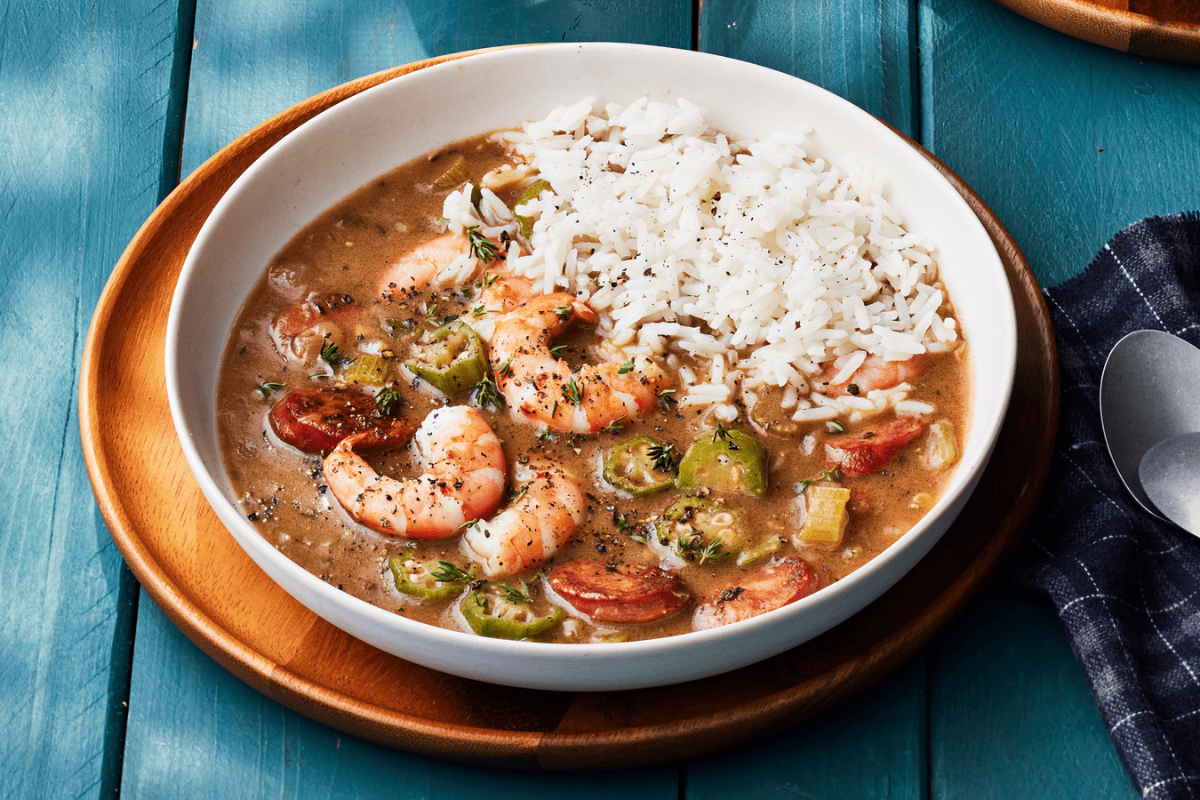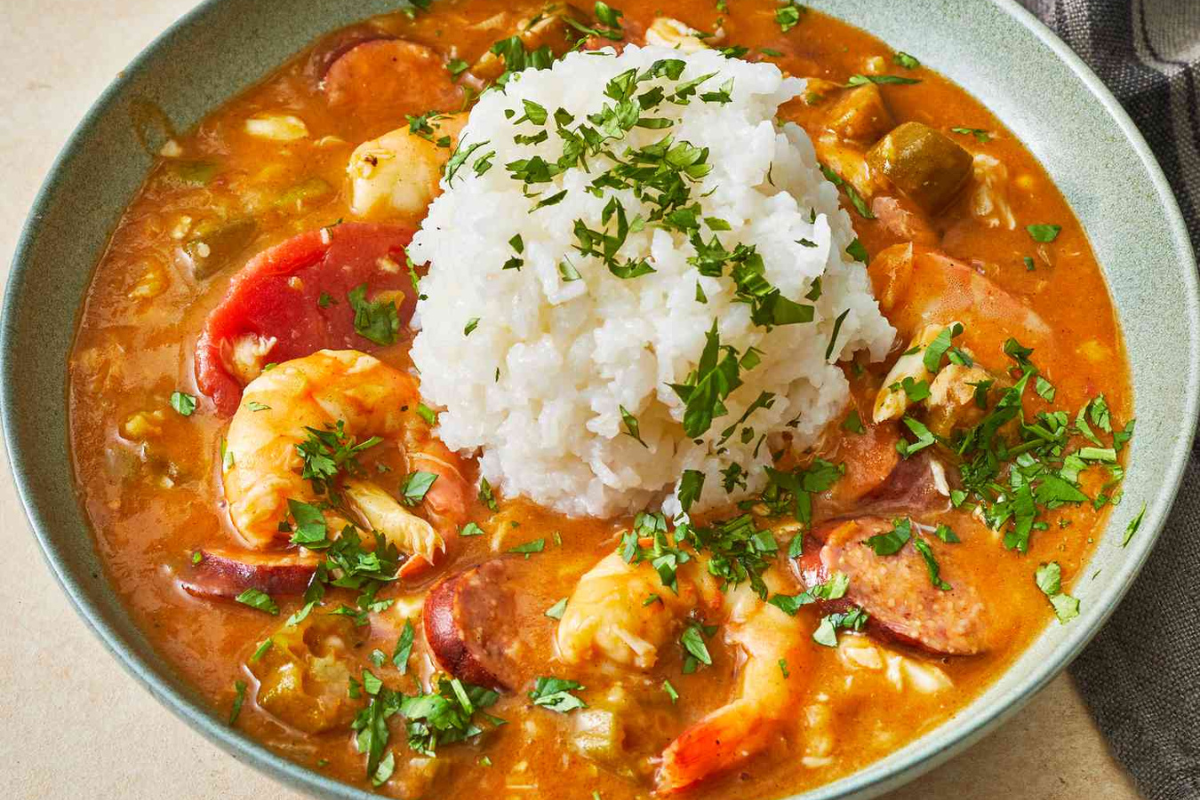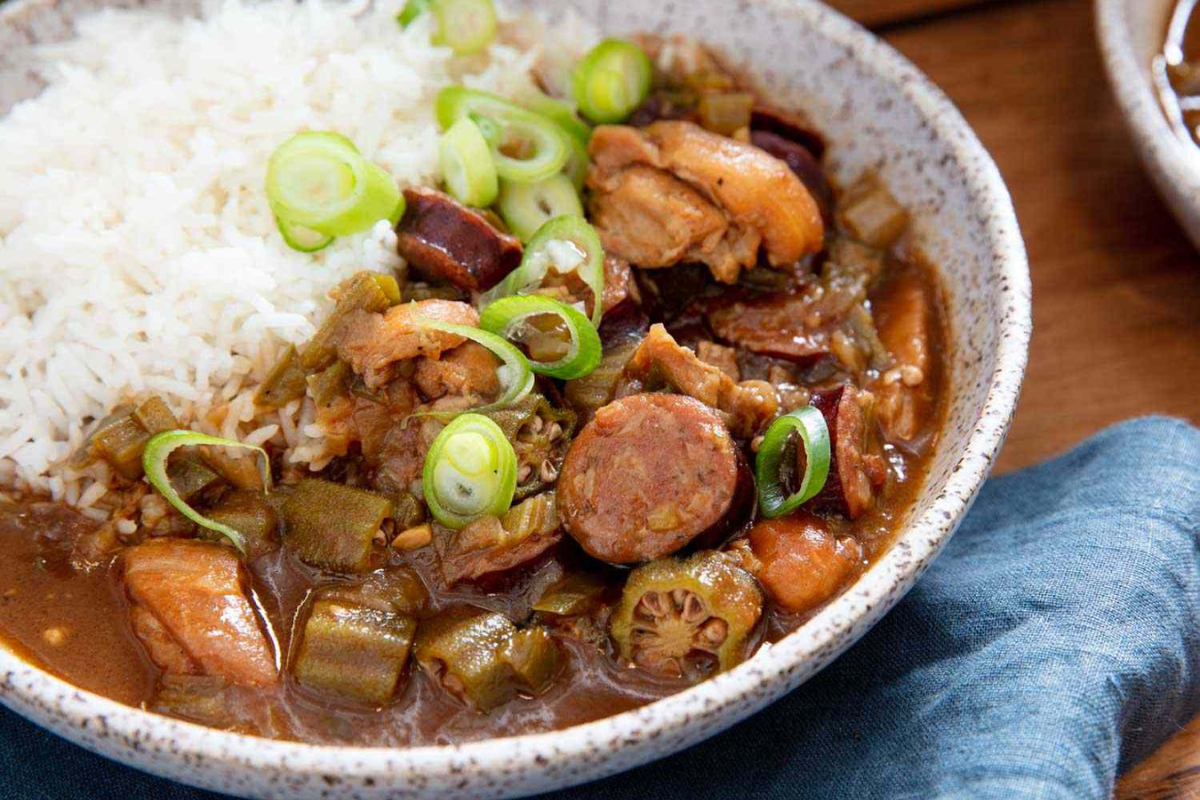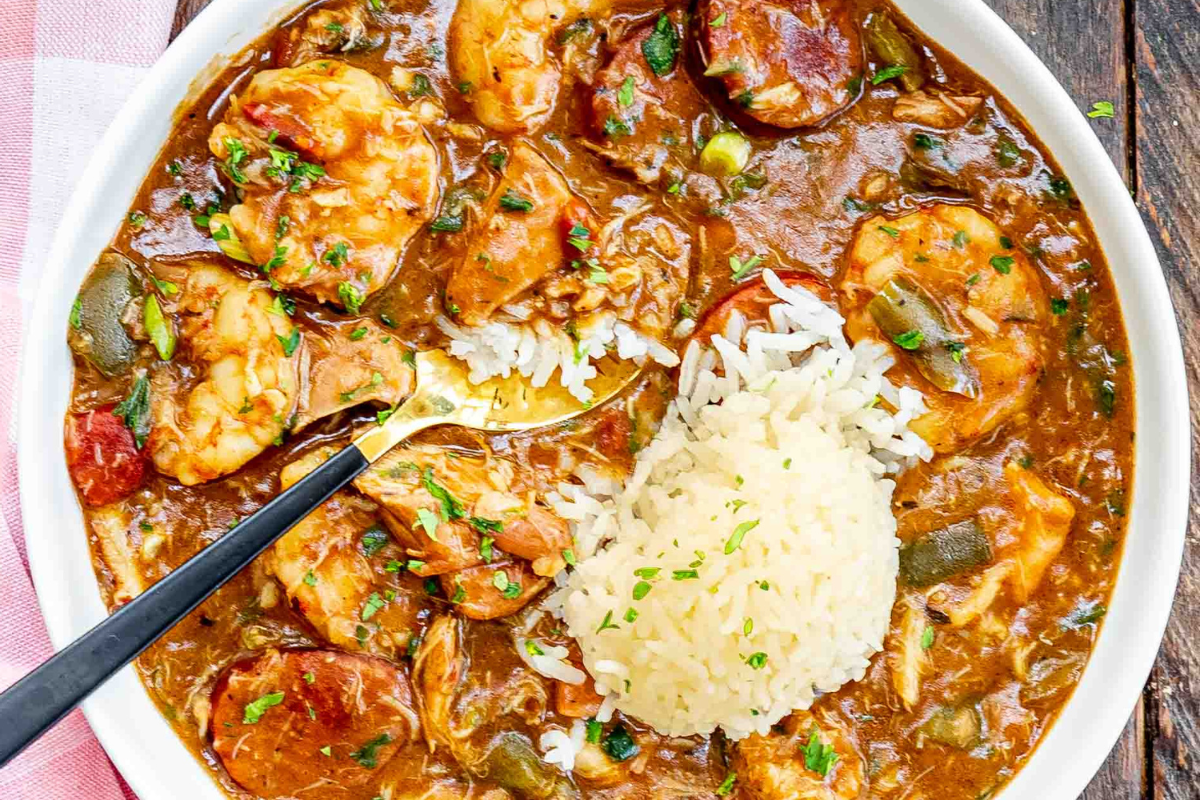Gumbo, the soul food of Louisiana, is a dish that transcends mere sustenance. It’s a vibrant tapestry of flavors, a culinary kaleidoscope woven from the threads of diverse cultures that have called the Deep South home. Each spoonful is a journey through history, a testament to the resilience and creativity of the people who birthed this iconic dish.

Photo: Southern Living
The origins of gumbo are shrouded in the mists of time, much like the roux that thickens its broth. Some trace its roots back to West Africa, where the word “gumbo” likely originated from the Bantu term “kingdom,” meaning okra. Others point to the influence of Native American tribes, who used sassafras leaves (filé powder) as a thickener. The arrival of French and Spanish colonists further enriched the gumbo pot, adding their own culinary traditions like roux-making and the use of tomatoes.
Over centuries, gumbo evolved into a regional treasure, reflecting the unique blend of cultures that shaped Louisiana. Creole communities in New Orleans favored a tomato-based gumbo, often featuring seafood like shrimp and oysters. Meanwhile, their Cajun counterparts in the bayou country preferred a spicier version, traditionally made with chicken, sausage, and okra.
The symphony of flavors
Despite its diverse origins, gumbo boasts a unifying character. The foundation lies in the roux, a deep golden concoction of flour and fat cooked until it reaches the desired shade, its rich nuttiness forming the backbone of the dish. This roux is then blessed with the “Holy Trinity” of Cajun cooking – onions, bell peppers, and celery – sweating their way into aromatic submission.

Photo: Allrecipes
The protein symphony kicks in next, with each region offering its own soloists. Chicken and sausage strut their stuff in Cajun gumbo, while plump shrimp and crab take center stage in Creole renditions. Okra, the “green gold” of gumbo, adds a touch of vegetal sweetness and its characteristic thickening power.
The broth, simmered with love and a medley of spices, provides a harmonious backdrop. File powder, made from sassafras leaves, adds a unique earthy depth, while cayenne pepper and paprika inject a fiery warmth. Herbs like thyme and bay leaf whisper their secrets, and a splash of hot sauce can bring the whole composition to a rousing crescendo.
Deep dives into the Gumbo pot: A look at regional variations
The tapestry of gumbo’s flavors is woven with threads from across the Deep South, each region boasting its own unique twist on this beloved dish. Here’s a peek into some of the most distinctive regional variations:
Creole Gumbo: Bathed in the vibrant culinary scene of New Orleans, Creole gumbo typically features a tomato base, adding a touch of sweetness and acidity to the broth. Tomatoes were readily available in Creole kitchens, and their inclusion reflects the influence of Spanish and Italian settlers. This version often stars seafood like shrimp, crab, and oysters, with okra playing a less prominent role or even being omitted altogether.

Photo: Serious Eats
Cajun Gumbo: Embracing the rustic heart of Louisiana’s bayou country, Cajun Gumbo is a spicier affair. Roux is the star, cooked to a deep, almost burnt hue for maximum flavor. Chicken and sausage take center stage, creating a hearty and satisfying base. Okra, a staple in Cajun cooking, adds its signature thickening and earthy notes. Tomatoes are typically absent, allowing the rich flavors of the roux, meat, and spices to shine.
Choctaw Gumbo: Drawing inspiration from Native American traditions, Choctaw gumbo features filé powder, made from sassafras leaves, as its main thickener. This imparts a unique earthy and citrusy aroma to the broth. Wild game like squirrel or rabbit may replace the usual chicken or seafood, reflecting the hunting and gathering practices of the Choctaw people. Okra is often present, and corn may also be added for additional sweetness and texture.
German Gumbo: In pockets of Louisiana settled by German immigrants, a unique “German gumbo” emerged. This variation incorporates elements of German cuisine, like smoked sausage, dumplings, and even cabbage. The roux may be lighter, and the overall flavor profile tends towards a more savory and smoky richness.
Mobile Bay Gumbo: This coastal variety from Alabama celebrates the bounty of Mobile Bay. Fresh shrimp, oysters, and fish take center stage, while crab claws may add a touch of decadence. Okra is often present, and the roux is typically cooked to a medium shade, striking a balance between the Creole and Cajun styles.

Photo: Jo Cooks
Today, gumbo continues to evolve, adapting to new palates and ingredients while staying true to its core identity. Restaurants across the globe offer their own interpretations, each spoonful a testament to the dish’s enduring legacy. Whether savored in a bustling New Orleans eatery or cooked with love in a family kitchen, gumbo remains a culinary masterpiece, a vibrant tapestry of flavors woven with the threads of history, community, and cultural pride.
So, the next time you encounter a steaming bowl of gumbo, take a moment to appreciate the symphony of flavors swirling within. Each sip is a testament to the rich heritage of the Deep South, a reminder that food has the power to connect us across cultures and generations. Gumbo is more than just a dish; it’s a story waiting to be savored, a vibrant tapestry woven with the threads of history, resilience, and community.

